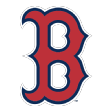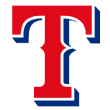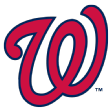Every year, Tristan H. Cockcroft analyzes hundreds of players to contribute to ESPN's projections and outlooks. These are the 20 sleepers that he'll be targeting in his leagues.
We'll start by bringing up that most mysterious of words, just as I so often do to begin my annual "Tristan's Twenty" column: Value.
What is value, really?
Value is finding the players for whom your opinion most deviates from the crowd's. It's putting your own stamp on your fantasy baseball team. Feel free to form any opinion about a player that you wish; just make sure that opinion is based on your research of the player's skills rather than random feelings.
This column is where I share my value picks, the list of players for whom I expect to collect the most shares in my own leagues.
"Tristan's Twenty" is selected accounting for several measures: my rankings, ESPN's ADP data, offsite ADP data, comparisons to other analysts' rankings, and industry drafts I've participated in or witnessed. It's always wise to gather as many pricing points as you can before your own drafts so that you can properly identify where the values might lie in your own leagues.
As always, a caveat: Once I reveal these picks, the odds increase that I won't roster a single one of them because of the attention brought to them in terms of ADP or simply by one person in my drafts trying to bid me up. Remember, these are all relative to how I perceive the current market!
Tristan's Twenty
 Nick Anderson, RP, Tampa Bay Rays
Nick Anderson, RP, Tampa Bay Rays
Two pitchers last season faced at least 250 batters and generated swings and misses on at least 20% of all pitches thrown: Josh Hader (24.6%) and Anderson (20.5%). Better yet: Anderson's number in the category spiked to 26.0% after his July 31 trade to the Rays, which, while an unsustainable rate, illustrates that he has some of the best swing-and-miss stuff in the game today. While he does have an extreme fly ball leaning -- his 29.1% ground ball rate was fifth lowest among pitchers who faced at least 250 batters -- which puts his ERA at greater risk than your average reliever, he possesses a strong enough combination of high-90s fastball and low-spin curveball (to the point that it looks like a changeup to hitters) to be a thoroughly dominating reliever. Following Emilio Pagan's trade to the San Diego Padres in February, the Rays' closer job was wide open for the taking, with Anderson by far their best option. Even if they do the committee dance for another year, 20-plus saves would probably be enough to lock him in as a top-10 performer at the position.
 Josh Bell, 1B, Pittsburgh Pirates
Josh Bell, 1B, Pittsburgh Pirates
How is it that he's barely going as a top-100 player offsite? Sure, during Bell's breakthrough 2019, he endured a 24-game, 95-plate-appearance home run drought immediately following his appearance in the Home Run Derby, which had some concerned about the dreaded "curse" -- the quotes there to show how little stock I place in that -- and cast doubt on his first-half surge in the category. Still, he slashed .266/.377/.550 with 10 home runs in his final 31 games, continuing to show the fruits of his 2018-19 offseason in which he tinkered with his swing. Bell's adjustments were legit, and I think he's a good bet to improve on 2019's No. 76 overall finish on the Player Rater and 34th-place finish in terms of fantasy points.
 Andrew Benintendi, OF, Boston Red Sox
Andrew Benintendi, OF, Boston Red Sox
Heed the lessons of last year: Injuries, even minor ones that don't require an injured list stint, can have a profoundly negative impact on a player's production. A year ago, Benintendi's teammate Rafael Devers was listed in this space after a 2018 campaign riddled by bumps and bruises, and Benintendi's 2019 was similar, with leg, foot, quadriceps, side and thumb issues throughout the season, though he missed just 24 games. He'd have qualified as one of the year's biggest disappointments, but with a winter's rest, a slimmer look this spring and a wide-open path to the leadoff spot ahead of Rafael Devers, J.D. Martinez and Xander Bogaerts, Benintendi has plenty of room to rebound in 2020. In Benintendi's defense, he turned in his best single-year performance against left-handed pitchers (.269/.358/.438) and posted career highs with his 40.7% fly ball and 37.7% hard-contact rates.
 Joey Gallo, OF, Texas Rangers
Joey Gallo, OF, Texas Rangers
He's another player whose 2019 adjustments lent a great amount of legitimacy to his breakthrough. Gallo's 20.5% chase rate -- that's the percentage of swings at pitches thrown outside the strike zone -- was 27th lowest among 320 hitters who came to the plate at least 250 times, and he made much more contact too, his 17.0% swinging-strike rate his best in any of his eight professional seasons. While he probably has 20 points of batting average to give back in 2020, he's one of the few sluggers in the game truly capable of 50-plus home runs -- juiced ball or not. I think he's going to finally get there this season.
 Garrett Hampson, 2B/OF, Colorado Rockies
Garrett Hampson, 2B/OF, Colorado Rockies
While I'm not drafting him as early as some offsite ADPs indicate, Hampson is a stolen base gem that I'm keeping tucked away if he lingers into the late rounds. His 2019 was a huge disappointment as a whole, but he batted .330/.377/.526 with five home runs and 10 stolen bases in the season's final five weeks, showing enough versatility to make starts at second base, shortstop and in center field. Best yet: Hampson's 30.1-feet-per-second Statcast sprint speed for the season was fourth fastest in baseball, the second straight year he was a top-10 performer in that department. His path might be blocked as Opening Day approaches, but he should find enough opportunities spread across those three positions to be a cheap steals source.
 Ian Happ, OF, Chicago Cubs
Ian Happ, OF, Chicago Cubs
A candidate for playing time at both second base and in center field for the Cubs this spring, Happ should at least land an Opening Day roster spot, where his talented bat might eventually find its way into more plate appearances. He has sneaky-good pop, but after back-to-back disappointing seasons, he has seemingly been forgotten in fantasy leagues, falling well beneath the radar in standard ESPN leagues. Look at Happ's September: .311/.348/.672 rates, six home runs and 17 RBIs in 26 games, only nine of those as a starter. A more aggressive approach at the plate helped, and that's something he has carried into Cactus League play thus far. If you're looking for a final-round dart throw, he's one of the better ones out there.
 Rhys Hoskins, 1B, Philadelphia Phillies
Rhys Hoskins, 1B, Philadelphia Phillies
In another example of injuries harming a player's overall numbers, consider this about Hoskins: After he was hit by a pitch during an Aug. 15 game, he batted just .182/.312/.364 with a 28.9% strikeout rate, his home run rate dipping to a miserable-by-his-standards 2.9% during that time. That doesn't forgive him for the remainder of what was a disappointing 2019, but considering he'll be only 27 years old this season and that he possesses one of the keenest batting eyes in baseball, there's plenty of reason to expect a rebound. Since his Aug. 20, 2017, big league debut, he has an 8.8% swinging-strike rate and a 20.6% chase rate, numbers that look a lot like Anthony Rendon's -- though Hoskins does have a bit more of an extreme fly ball approach that hurts his batting average. There's no reason Hoskins should be drafted outside the top 100 players overall.
 Josh James, RP, Houston Astros
Josh James, RP, Houston Astros
He's one of the higher-variation picks due to his 9.5% pro-career and 11.8% big league career walk rates, but also because he's one whose stock has trended significantly upward in recent days thanks to his strong start to the spring. Thus far, he hasn't walked a single batter of the 15 he has faced, a positive sign as he looks to cut his walks to the point where his near-100-mph fastball coupled with above-average slider and changeup can simply overpower opposing hitters. Considering that James spent the offseason analyzing former teammate Gerrit Cole's delivery in an attempt to clean up his own, James' improvements this spring do matter, and it's a positive that the Astros are in need of back-end rotation options.
 Danny Jansen, C, Toronto Blue Jays
Danny Jansen, C, Toronto Blue Jays
The learning curve at catcher is lengthier than at other positions. One of the game's best, Yadier Molina, took five seasons to notch merely a 1-WAR year offensively! Jansen's rookie-year struggles should've been no shock, but he so severely underperformed, then played sparingly late in the year -- he started only 22 of the Blue Jays' final 50 games and caught back-to-back games only three times during that span -- that his perceived value couldn't be much lower than it is today. But don't forget: He batted .285 with 15 homers in 109 career games at the Triple-A level, fueled by an 84.7% contact rate. In the Blue Jays' final 81 games of 2019, Jansen sported an improved 80.4% contact rate, hit 10 homers in 182 trips to the plate and had .220 isolated power. He might be starting to figure things out in the majors.
 Joe Jimenez, RP, Detroit Tigers
Joe Jimenez, RP, Detroit Tigers
No one seems to want closers for bad teams, and the Tigers are sure to be a bad one, having lost a major-league-worst 114 games in 2019. Still, don't overlook what Jimenez did after graduating into the role despite pitching for a last-place team. In those final two months: 9-for-10 converting saves, 3.06 ERA, 30.3% strikeout rate. Combined, Jimenez and the man he replaced, Shane Greene, had 31 saves, and this again seems like a one-closer team in an era in which so many bullpens are shifting to a committee approach. I like the idea of a going-cheap strategy to fill your saves, and Jimenez is high on my list of targets at his current ADP.
 Carson Kelly, C, Arizona Diamondbacks
Carson Kelly, C, Arizona Diamondbacks
Speaking of going-cheap strategies, Kelly is one of my favorite final-round targets for one-catcher, 10-team ESPN standard leagues, a high-upside pick that'll afford you the opportunity to load up everywhere else rather than investing significantly at this volatile position. In his first season as a full-time big league catcher, he exhibited one of the greatest increases in launch angle (5.4 to 14.3 degrees), hard-contact rate (25.8% to 40.4%) and fly ball rate (16.1% to 29.7%), without any real loss in terms of overall contact. What's more, Kelly provided better-than-average defense, including rating as one of the better pitch framers, which could potentially fuel one of the larger plate appearance totals of any backstop in 2020.
 Reynaldo Lopez, SP, Chicago White Sox
Reynaldo Lopez, SP, Chicago White Sox
Yasmani Grandal's arrival in Chicago was a huge boon to the White Sox's pitching staff, as he has been a top-four pitch framer per Statcast in each of the past five seasons (not to mention arguably the best at it during the past three combined), but while pitchers like Lucas Giolito, Dallas Keuchel and Dylan Cease seem to be getting most of the love this preseason thanks in part to Grandal's arrival, Lopez is the one seemingly slipping beneath the radar. Perhaps Lopez's 5.38 full-season 2019 ERA has something to do with it, but the more important takeaway was that after he adjusted his delivery during the All-Star break, he managed a 4.29 ERA and 22.5% strikeout rate in his final 15 starts. Here's another: Lopez's strikes looking was 25.8% below average, worst among the 61 pitchers who qualified for the ERA title. If he's going to consistently slip outside the top 50 starters, sign me up.
 Jesus Luzardo, RP, Oakland Athletics
Jesus Luzardo, RP, Oakland Athletics
One of the best bets for Rookie of the Year honors entering 2020, Luzardo brings one of the strongest skill sets of any member of the freshman class, with the primary question surrounding him being durability/workload, after he amassed only 55 innings combined between the majors and minors in 2019. He has a mid-90s fastball, elite curveball and above-average changeup, combining them thus far to post three lights-out spring performances to date, which might have him on the verge of clinching an Athletics rotation spot. Be cautious with your expectation for his starts and innings totals -- 25 and 140 might be his caps -- but those are Chris Paddack 2019 amounts, and I think Luzardo's stuff is no less elite than Paddack's.
 Kenta Maeda, SP/RP, Minnesota Twins
Kenta Maeda, SP/RP, Minnesota Twins
How often is it that a player traded out of pitching-friendly Dodger Stadium and into the American League and a more hitting-oriented environment benefits in terms of fantasy value? For Maeda, I think it unquestionably does, as he's clearly one of his new team's top four rotation options, whereas the Dodgers regarded him as a swingman capped at 150 or so innings. Perhaps durability will come into question if he's used as a full-time starter, or the Twins could keep his workload in check knowing that he has a volume-based contract incentive, but I think he's too good not to stick -- and thrive -- as a full-time starter. Consider: From 2017 to 2019, Maeda was one of only seven pitchers with at least a 25% strikeout rate with no greater than 7.5% walk or 33% hard-contact rates allowed. The other six? Gerrit Cole, Jacob deGrom, Chris Sale, Max Scherzer, Luis Severino and Stephen Strasburg.
 Sean Manaea, SP, Oakland Athletics
Sean Manaea, SP, Oakland Athletics
I'm a Manaea fan, not because of his lights-out late-season performance in 2019 following his recovery from shoulder surgery, nor because I see Cy Young votes in his immediate future. No, the appeal of this left-hander is a consistent, high-floor base of skills, including good control, balanced splits and a slider that does have a good amount of swing-and-miss to it. Manaea looks like a good bet for 3.75 ERA/4.00 FIP/1.15 WHIP numbers, except that he's being drafted like more of a back-of-your-staff type than one who warrants mid-round consideration.
 Rougned Odor, 2B, Texas Rangers
Rougned Odor, 2B, Texas Rangers
It's tough to tout the league's defending owner of the strikeout crown -- and, as an aside, it took only 178 strikeouts for an American League player to lead his league? -- but around all of the swing-and-miss in his game, Odor did some things that were encouraging. Those whiffs have pushed his draft stock down, but in 2019 he enjoyed huge spikes with a 13.6% Statcast Barrel rate, 45.5% hard-contact rate and 28.9% fly ball rate, all of those easily his best in any single year. It's strange to see a onetime contact-oriented prospect become such an extreme fly baller as Odor has in the majors, but it sure seemed to pay off late last year, especially in September, when he batted .261/.337/.648 with nine homers and 25 RBIs. If the rest of your league has given up on him, snatch him up as a middle infielder with plenty of profit potential.
 Miguel Sano, 3B, Minnesota Twins
Miguel Sano, 3B, Minnesota Twins
Four injured list stints and 143 days lost the past four seasons might have taken some of the shine off Sano's once-bright future, but don't count him out so fast. His quality of contact last season was excellent: His 10.7% Statcast barrel rate per trip to the plate -- that's a classification assigned to a batted ball that has an optimal launch angle and exit velocity -- was fourth best in the game, his 94.4 mph average exit velocity was second best and his 57.2% hard-contact rate was the game's best. Sano also slashed .266/.371/.595 with 23 home runs in the Twins' final 81 games, a sign that he might finally be ready to challenge for a home run crown.
 Kyle Schwarber, OF, Chicago Cubs
Kyle Schwarber, OF, Chicago Cubs
Don't underestimate the improvements Schwarber made against left-handed pitchers last season. A .190/.301/.330 hitter with a 15.3% swinging-strike rate against them in his career entering the 2019 All-Star break, he slashed .240/.309/.500 with three home runs in 50 at-bats and a 13.3% swinging-strike rate against them the rest of the way, cementing his status as a capable everyday left fielder. Schwarber might seem like a locked-in .240-30 type with little more to offer, but his incremental gains the past two seasons make him a strong bet to take another step in 2020.
 Yoshi Tsutsugo, OF, Tampa Bay Rays
Yoshi Tsutsugo, OF, Tampa Bay Rays
I've been torn between three Rays hitters in competition for that wide-open third base job -- Yandy Diaz and Nate Lowe the other two -- for selection to this list, but sticking to the theme of "value for the price," Tsutsugo is the one I want. He's in the mix for playing time at third base, first base, left field and designated hitter on a team that loves to maximize daily matchups, and his combination of patience and pop is appealing, even at a pitching-friendly venue like Tropicana Field. He managed at least 28 home runs, a .388 on-base percentage and a .511 slugging percentage in each of his past three seasons in Japan, traits especially attractive in points-based leagues.
 Austin Voth, SP, Washington Nationals
Austin Voth, SP, Washington Nationals
This one's mostly a hunch: Voth is 28 years old with a 4.23 ERA in 74 career starts and two relief appearances at the Triple-A level the past four seasons, giving him the look of a stopgap/No. 6-7 starter. Still, as a five-start September fill-in, he flashed an electric combination of curveball and slider, those two pitches generating a combined 26.5% swinging-strike rate -- that's Patrick Corbin-level good. The small-sample caveat naturally applies, but Voth is the most deserving in a wide-open competition for the Nationals' fifth starter spot, and I think he'll be needed more than expected after the front end of the rotation was asked to do a lot during the team's championship run. He's a wise final-round dart throw.
